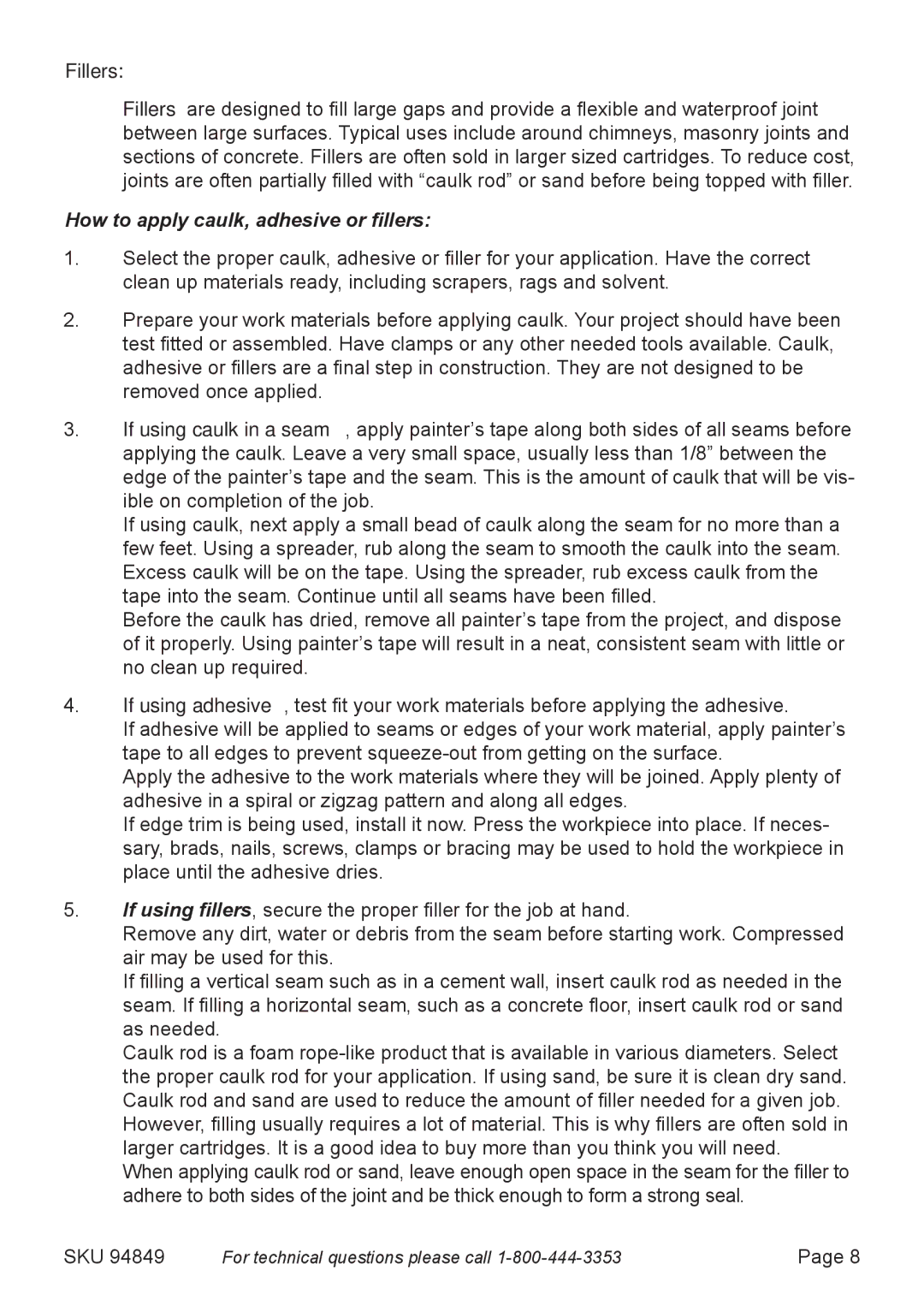94849 specifications
Harbor Freight Tools 94849 is a versatile and high-performance tool essential for professionals and DIY enthusiasts alike. Renowned for its sturdiness and effectiveness, this tool exemplifies Harbor Freight's commitment to providing quality and value. It is primarily recognized for its ergonomic design, which allows for comfortable handling during extended use.One of the standout features of the 94849 is its robust construction. Made from durable materials, it ensures longevity even in the toughest of work environments. This aspect guarantees that users can rely on this tool for numerous projects without worrying about wear and tear.
The 94849 is designed with several innovative technologies that enhance its performance. One key advantage is its precision engineering, which enables accurate and efficient operation. The tool's components work seamlessly together, reducing friction and improving overall efficiency. This results in higher productivity, saving both time and effort for the user.
Additionally, Harbor Freight Tools has incorporated an easy-to-use adjustment mechanism in the 94849. This feature allows users to quickly modify settings without the need for complicated processes or additional tools. It encourages faster adaptations to varying tasks, which is crucial in professional settings where time is of the essence.
Another significant characteristic of the Harbor Freight 94849 is its safety features. The inclusion of safety guards and non-slip grips adds an extra layer of protection for the user. These features not only contribute to safer operation but also instill confidence in the user while performing intricate work.
In terms of versatility, the 94849 excels with its ability to handle a wide range of applications. Whether it’s for automotive repairs, woodworking, or general home maintenance, this tool meets diverse needs seamlessly. Its lightweight design also makes it easily portable, catering to those who require mobility without sacrificing performance.
Overall, the Harbor Freight Tools 94849 is an exceptional choice for anyone looking to invest in a reliable, feature-rich tool. With its combination of durability, ease of use, and safety features, it stands out in the competitive market of tools, making it a popular choice among both professionals and hobbyists alike.
